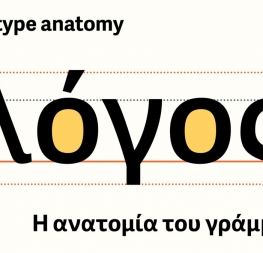Summary
• Hebrew is a single case alphabetic script consisting of 22 letters and 5 additional final forms. It is written from right to left.
• Traditionally Hebrew typefaces do not include typographic ‘tools’ such as italics or small caps.
• The Hebrew script is used for Hebrew, Yiddish, and Ladino.
• Hebrew letters are written below the top guideline (as Ismar David described, “...Hanging like laundry from a clothesline.”). Although Hebrew is written from right to left, each individual character is produced by pulling the pen from left to right and from top to bottom. Hebrew traditionally has a horizontal stress.
• The Hebrew alphabet has no vowel letters. The vocalisation marks (Niqqud) is a set of diacritics added above, below, and within the characters in order to distinguish between alternative pronunciations of letters. Biblical text requires additional specialized marks as well as cantillation marks used as musical notation for chanting rituals.
• Hebrew uses Arabic numerals and Latin punctuation marks with the addition of the Hebrew high-hyphen. Although the punctuation marks are identical to the Latin ones, their height and angle should be adapted to Hebrew.
• There is a traditional Alef-Lamed ligature, and a Shin-Het ligature which is used for the Israeli currency sign.
• Using Hebrew in publishing software: to correctly set Hebrew texts in Indesign or other desktop publishing software make sure the right-to-left typesetting is activated. For InDesign, activate the Adobe World-Ready Paragraph Composer; for Illustrator, activate the Middle Eastern Single-line Composer, and make sure the text has the Hebrew LOCL feature activated.
Bibliography
David, Ismar. The Hebrew letter: calligraphic variations. Northvale, N.J. J.: Aronson Inc., 1990.
Lavi Turkenic, Liron. From Frank Rühl to Peninim. A story of people, type and technology. MA Typeface Design studies at the University of Reading, 2013.
Narkiss, Mordechai. Dictionary of graphics terms. Bialik Institute and The Hebrew Language Committee, Jerusalem, 1936–7.
Pludwinski, Izzy. Mastering Hebrew calligraphy. New Milford, CT; Jerusalem, Toby Press, 2012.
Sadan, Meir, ‘An introduction to Hebrew type (2018), what is a “serif” in Hebrew? (2017)’ Medium.com.
Silberberg, Gershon. Principles of printing, The organisation of printers in Israel. Merhavia: Ha’shomer Ha’tzair press. 1968 [Heb].
Spitzer, Moshe. The development of Hebrew lettering: and other selections, Ariel; quarterly review of arts and letters in Israel, No. 37, January 1, 1974.
Stern, Adi, Some guidelines and recommendations for the design of a Hebrew book typeface, MA dissertation Typeface Design, University of Reading, 2003.
Wardi, Ada. (ed). The graphic design of Moshe Spitzer, Franzisca Baruch, and Henri Friedlaender. Jerusalem: The Israel Museum, 2015–16.
Yardeni, Ada, The book of Hebrew script : history, palaeography, script styles, calligraphy & design, 3rd Edition, Carta, Jerusalem, 2010.
Files
Download the PDF Hebrew Type Anatomy.








